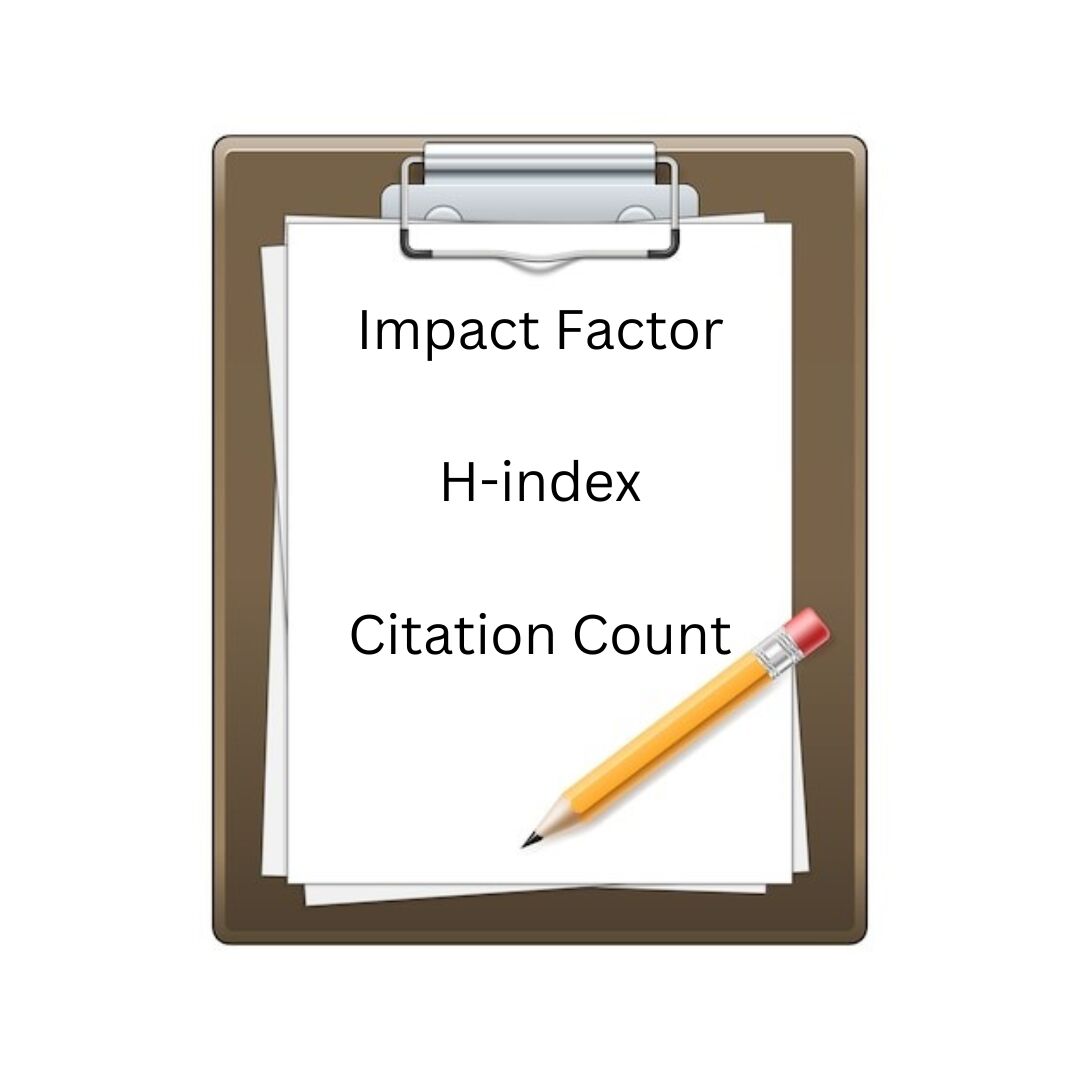Understanding Impact Factor, h-index, and Citations in Journal Publications


The impact factor, introduced by Eugene Garfield in 1955, is a bibliometric indicator that reflects the average number of citations received by articles published in a specific journal over two years. It is calculated by dividing the number of citations received by the journal in a given year by the total number of items (articles, reviews, etc.) published in the previous two years.
It is widely recognized and used as a benchmark for comparing journals within a field.
It provides a snapshot of the overall influence of a journal on its research area.
It assesses the potential reach and impact of publishing in a particular journal.

It can be skewed by highly cited articles, potentially misrepresenting the impact of many articles in the journal.
It favors journals in rapidly evolving fields with frequent citations.
It does not consider the quality or originality of published research.

The h-index is a metric that attempts to quantify the productivity and impact of a researcher's work. It was proposed by physicist Jorge E. Hirsch in 2005 as an alternative to simple citation counts. The h-index is calculated by ranking a researcher's publications in descending order based on the number of citations they have received. The h-index is the highest number of h for which h publications have at least h citations.
It considers the quantity and impact of publications, providing a more comprehensive measure than simply counting publications.
It is less susceptible to outliers than the impact factor, as it considers the distribution of citations across all publications.
It can be used to compare researchers within a field, considering their career stage and field-specific citation patterns.

It can be influenced by self-citations and citations from co-authors.
It may not accurately reflect the impact of highly cited review articles or books.
It can be challenging to interpret for researchers with a small number of publications.

Citations are references to previously published works within a scholarly article. They serve several purposes, including acknowledging the contributions of other researchers, providing evidence and support for claims, and facilitating the discovery of related research. Citations are a fundamental aspect of scholarly communication and play a crucial role in assessing the impact and influence of research.
It provides a direct measure of the impact of an individual article.
They used it to track the long-term influence of research over time.
It can be used to identify highly influential articles within a field.

It can be influenced by self-citations and citations from co-authors.
It may not accurately reflect the quality or originality of the research.
It can be skewed by highly cited review articles or books.

A Multifaceted Approach to Measuring Impact
Impact factor, h-index, and citation count are valuable tools for assessing the impact of research, and it is crucial to recognize their limitations and use them in conjunction with other measures of scholarly quality and influence. These metrics, when combined with factors such as research originality, journal quality, and the researcher's overall contribution to their field, can provide a more comprehensive understanding of scholarly impact.


Send Your Paper Abstract |

Receive Journal List |

Select Your Journal |

Start the Publication Process |
If you have any questions, inquiries, or would like to learn more about our services, please don't hesitate to reach out to us. Our dedicated team is ready to assist you.